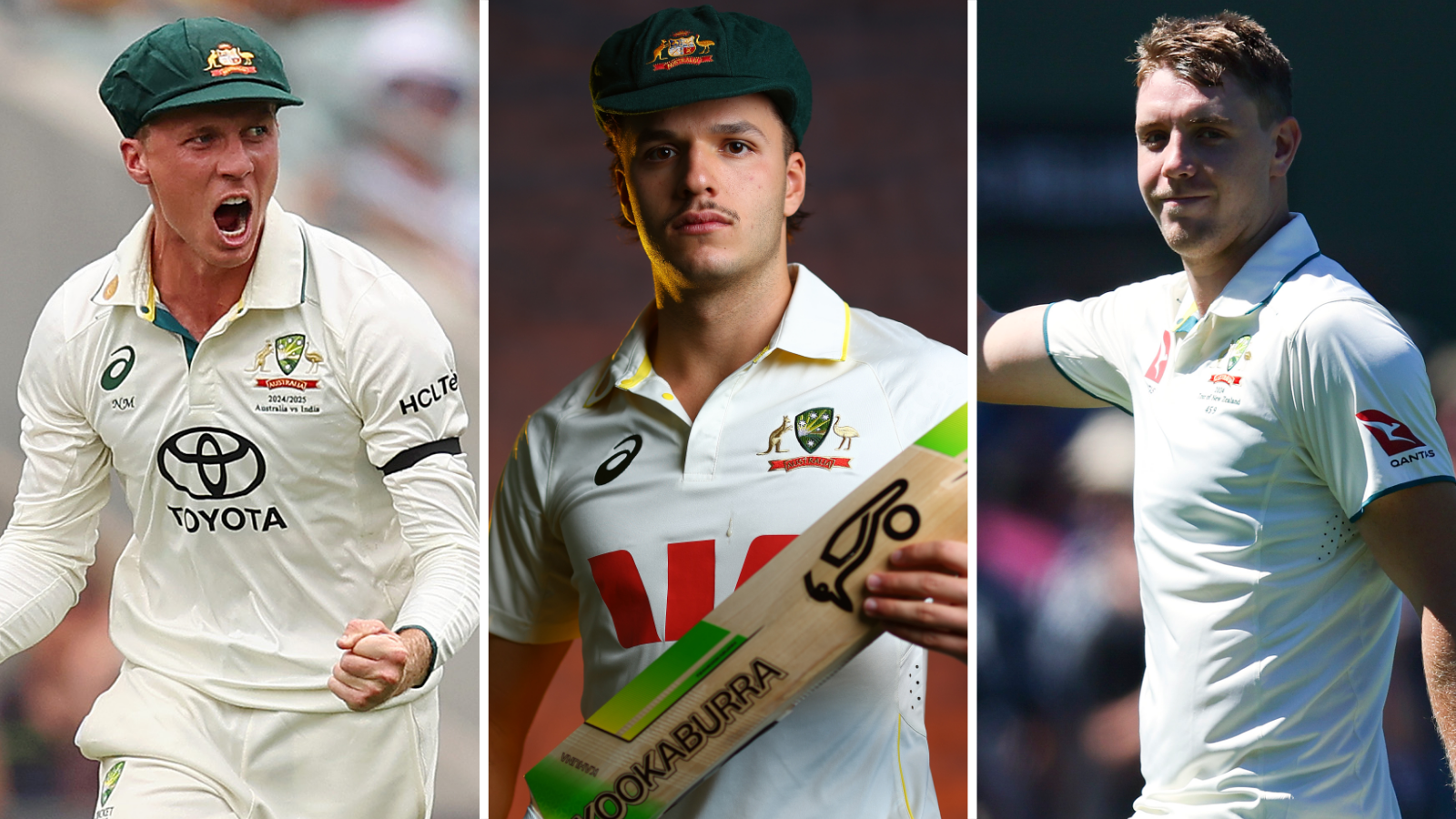- 8 Comments
It’s not often England land in Australia for an Ashes series with a more settled top order than their hosts.
Yet such is England’s planning for this winter, they head down under with a top six that has, for the most part, stayed together ever since head coach Brendon McCullum took charge.
Australia do not have such luxuries: they have struggled to find somebody to replace opener David Warner, while number three has been a problem position for a while.
It’s been more than two years since an Australian scored a Test century at first drop: Marnus Labuschagne’s 111 against England at Old Trafford in the most recent Ashes series.
“It doesn’t strike me like the batting line-ups I came up against,” said former England spinner Phil Tufnell.
“All great sides have a solid opening partnership with a number three who is the best player in the side.
“If England can get the wood over that opening partnership, it doesn’t half make a difference. This is a slightly vulnerable batting line-up.”
It means places are up for grabs, certainly in the top three, when the Sheffield Shield, Australia’s four-day state competition, begins overnight.
Who will open alongside Khawaja?

Khawaja, who is set to play in his seventh Ashes series, will turn 39 during the third Test but is seen as the glue at the top of the Australian batting order.
While not as prolific in recent years, he started the year by scoring a double century against Sri Lanka in Galle to underline his status as Australia’s leading player against spin.
Travis Head, Steve Smith, Sam Konstas, Nathan McSweeney and Labuschagne have all been tried as openers but none have proven to be successful enough to stay there.
Head and Smith are now back in more familiar middle-order roles and will be expected to score big runs against England, while 20-year-old Konstas averaged just 8.33 in three Tests against West Indies after a promising start to his Test career against India last winter.
A century for Australia A earlier this month may boost Konstas’ claim.
But if not Konstas, then who?
This is where we start throwing out more familiar names from Ashes past: the likes of Cameron Bancroft and Matthew Renshaw. Another option would be uncapped 30-year-old Jake Weatherald, who crunched 183 in a high-scoring draw against Sri Lanka A in July.
Former Australia wicketkeeper Ryan Campbell, however, would go left-field and select Leeds-born Josh Inglis, who has batted in the middle order in his previous three Tests.
“Since Warner’s gone, we have lost mojo at the top of the order,” said Campbell.
“I would go with Josh Inglis, who bats down the order but has opened in T20 cricket and has opened as a youngster.
“I was lucky enough to see him as a 14-year-old at my club and I know he’s from England but he speaks good Aussie now.
“He attacks and when Australia play well, we attack and don’t just defend.
“If you’re going to take a gamble on someone, here’s a kid who has played lots of international cricket. Yes, he’s batted a bit down the order but he’s got a beautiful technique and can whack it.”
Interestingly, only two batters – current Australia wicketkeeper Alex Carey and Jason Sangha – averaged more than Inglis’ 72.6 for Western Australia in the Shield last season.
In Perth, albeit at the Waca and not the Optus Stadium, where the first Test will be held, Inglis averaged 99 and scored heavily square of the wicket (22% either side).
What about number three?

With Steve Smith at number four and Travis Head at five, Australia look to have a solid and stable engine room.
However, they are yet to find an established number three who can soak up pressure or build on a dominant foundation.
After a run-laden start to his career, Labuschagne, 31, appears to have dropped out of favour, though a good start to the domestic season could change his fortunes.
McSweeney, who made his Test debut as an opener against India last winter before being replaced by Konstas, appears the man the selectors fancy given he batted there in the recent India A series.
The 26-year-old right-hander impressed in the second of the two-match series, which India won 1-0, with scores of 74 and 85 not out.
He could, of course, be considered as an opener too. That would open the door for the likes of Marcus Harris, who scored more than 1,000 runs for Lancashire in the second division of the County Championship this summer at an average of 60.
Perhaps the most likely candidate to step up is all-rounder Cameron Green, which would allow Australia to also play Beau Webster at six – boosting their seam-bowling options and taking some of the pressure off the likes of Pat Cummins, Mitchell Starc and Josh Hazlewood, who may all be playing their final Ashes series.
Green, 26, averaged more than 50 in 2024 and is approaching his best years with 32 caps to his name.
“I think Cameron Green is an amazing cricketer,” said Campbell. “Once he starts bowling again, he adds another dimension for Australia.”
Green batted at first drop in the World Test Championship final against South Africa at Lord’s, and then in three Tests against West Indies this summer.
On difficult pitches, he impressed in the Caribbean, passing 40 in three of his five innings.
If we look at individual batting records in the Sheffield Shield last summer on Test grounds in Australia (Adelaide Oval, Gabba, MCG and SCG), 32-year-old Kurtis Patterson (383 runs at 63.8) stands out for runs scored, with the highest average belonging to Queensland’s uncapped left-hander Jack Clayton (285 runs at 71.3).
Related topics
- Australia
- Cricket
Source: BBC

Leave a Reply